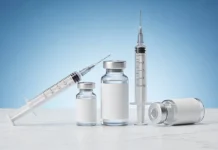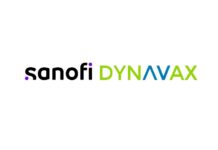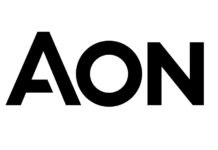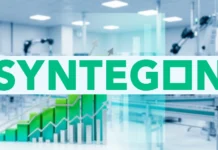The pharmaceutical industry is one of the most highly regulated sectors globally, and for good reason. From discovery to commercialization, developing a new drug is a complex process that involves multiple stages of research, development, and rigorous testing. Central to ensuring the safety and efficacy of a drug throughout this process is Quality Assurance (QA). The role of QA is to ensure that all aspects of drug development, from laboratory studies to clinical trials and manufacturing, comply with strict regulatory standards.
To provide insights into the critical function of QA in new drug development, we had the opportunity to speak with Vaibhav Patel, a leading QA expert with more than 13 years of experience in the field. Mr. Patel has worked with some of the largest pharmaceutical companies in the world and has been instrumental in bringing several new drugs to market. In this interview, he discusses the challenges, evolving role, and future of QA in drug development.
1. Could you provide an overview of the primary responsibilities of Quality Assurance in the drug development process?
VP: Quality Assurance plays a fundamental role throughout the entire drug development lifecycle. Our primary responsibility is to ensure that quality is built into every phase of the process—starting from early-stage discovery all the way through to clinical trials and manufacturing. QA isn’t just about inspecting the final product; it’s about creating systems and processes that ensure that every step meets regulatory and quality standards.
For example, in preclinical research, QA ensures that Good Laboratory Practices (GLP) are adhered to. In clinical trials, we focus on Good Clinical Practices (GCP) to ensure the safety and well-being of trial participants and the integrity of the data collected. Then, in manufacturing, we ensure compliance with Good Manufacturing Practices (GMP). By overseeing these critical areas, QA helps prevent errors, identify potential risks early, and ultimately ensures that the drugs developed are safe and effective for patients.
2. You touched on the various practices like GLP, GCP, and GMP. Could you explain how these fit into the larger framework of QA, and why they are so important?
VP: Certainly. These are international quality guidelines that ensure consistency, safety, and reliability in drug development. GLP ensures that non-clinical studies, which are often the first step in drug development, are conducted with transparency and accuracy. This is crucial for generating reliable data that will later support clinical trials.
GCP, on the other hand, is focused on the clinical trial phase. It sets standards for the ethical treatment of participants and the credibility of data collected during trials. GCP ensures that the rights, safety, and well-being of trial participants are prioritized, while also guaranteeing the scientific integrity of the clinical trial itself.
Finally, GMP covers manufacturing practices. It ensures that drugs are consistently produced and controlled according to quality standards. GMP is about making sure that the drug products are safe, pure, and effective, and that the manufacturing process is well-documented and transparent. Without adherence to these regulations, it’s nearly impossible to gain regulatory approval from agencies like the U.S. Food and Drug Administration (FDA) or the European Medicines Agency (EMA).
3. Can you explain how QA differs from Quality Control (QC), and why the distinction is important in drug development?
VP: That’s an excellent question, and one that’s often misunderstood. Quality Assurance is proactive and focuses on the processes and systems in place to ensure quality throughout the drug development lifecycle. It’s about setting up quality management systems, standard operating procedures (SOPs), and training staff to ensure compliance at every stage of the development process.
On the other hand, Quality Control (QC) is reactive and product-focused. QC involves testing and inspecting the final product to ensure that it meets the required specifications before it is released to the market. QA is more about preventing issues from arising, while QC is about detecting and correcting problems in the final product.
This distinction is important because both QA and QC play essential roles in not only ensuring the quality of the drug, but they address it from different angles. QA sets the stage by building quality into the process, and QC verifies that the product meets the defined standards before reaching the market.
4. What are some of the biggest challenges that QA professionals face during the drug development process?
VP: One of the biggest challenges in QA today is staying up to date with the ever-evolving regulatory landscape. Different countries have their own regulatory requirements, and global pharmaceutical companies must ensure compliance across multiple jurisdictions. For example, while the U.S. FDA has its regulations, the EMA and other regional regulatory bodies may have additional or slightly different requirements. Navigating these complexities requires ongoing training and a deep understanding of the global regulatory environment.
Another challenge is managing data integrity, particularly with the increasing use of digital systems. As more data is collected electronically during clinical trials and manufacturing, ensuring that this data is secure, reliable, and traceable becomes a top priority. QA teams are now tasked with validating software systems and ensuring compliance with regulations such as 21 CFR Part 11, which governs electronic records and signatures.
Additionally, as new therapies like gene therapies, cell therapies, and personalized medicines gain traction, QA teams must adapt quickly. These therapies often involve novel manufacturing processes, which require new QA strategies to ensure compliance and product quality.
5. How does QA contribute to the success of clinical trials?
VP: QA is absolutely critical to the success of clinical trials. Our role begins well before a clinical trial is conducted. QA teams work closely with clinical operations to develop robust protocols that align with regulatory requirements and industry best practices. We ensure that informed consent forms, trial design, and patient safety measures are all in place before the trial starts.
Once the trial is underway, QA teams conduct audits and inspections of clinical trial sites to ensure that investigators are adhering to the protocol and that data collection is accurate and reliable. This includes monitoring adverse event reporting, ensuring that deviations from the protocol are documented, and verifying that clinical data is complete and authentic.
QA also plays a key role in trial documentation. Clinical trials generate an enormous amount of data, and it is QA’s job to ensure that this data is properly recorded, stored, and protected. This ensures that when the time comes for regulatory submission, the data is of the highest quality and can stand up to the scrutiny of agencies like the FDA or EMA.
Without a strong QA presence, clinical trials risk failing to meet regulatory requirements, which could delay approval or, worse, result in a product that doesn’t meet safety or efficacy standards.
6. The pharmaceutical industry is undergoing rapid digital transformation. How is QA adapting to this shift, particularly with the rise of electronic records and data analytics?
VP: The digital transformation in pharma is both a challenge and an opportunity for QA. On one hand, the move to electronic records and the use of data analytics enhances transparency and allows for more efficient real-time monitoring of quality processes. Tools like electronic trial master files (eTMF) and laboratory information management systems (LIMS) streamline operations, making data collection and monitoring more efficient.
However, this shift also introduces new complexities. QA now has to ensure that these digital systems comply with regulatory standards, like 21 CFR Part 11, which is the FDA’s regulation on electronic records and signatures. This requires rigorous system validation processes, cybersecurity measures, and ongoing audits to ensure that data integrity is maintained.
Moreover, the use of artificial intelligence (AI) and machine learning (ML) in predictive analytics is becoming more common. These tools can help QA teams identify potential quality issues before they occur, by analyzing trends and flagging anomalies. However, integrating these new technologies requires QA professionals to acquire new skills and adapt existing processes to harness their full potential without compromising on compliance.
7. Can you talk about QA’s role in post-market surveillance?
VP: Absolutely. Post-market surveillance is a critical phase of the drug lifecycle, and QA plays an ongoing role even after a drug has been approved. Once a drug is on the market, QA teams monitor its performance in real-world settings to ensure that it continues to meet safety and efficacy standards. This includes overseeing the adverse event reporting process, where any side effects or unexpected reactions are reported and investigated.
QA is responsible for ensuring that there is a robust system in place for detecting, investigating, and responding to any quality issues that arise during post-market surveillance. This could involve recalling a product, issuing warnings to healthcare providers, or working with regulatory authorities to address the issue.
The goal of post-market QA activities is to ensure that any problems are identified quickly and that corrective actions are taken to protect patient safety. It’s a continuous cycle of monitoring, feedback, and improvement.
8. How important is cross-functional collaboration in QA?
VP: Cross-functional collaboration is at the heart of effective QA. QA teams must work closely with R&D, regulatory affairs, clinical operations, manufacturing, and even marketing to ensure that quality considerations are integrated at every stage of the drug development process. It’s not enough for QA to operate in a silo.
For example, during the early stages of drug development, QA works closely with R&D teams to ensure that experimental protocols are compliant with GLP and that the data generated is reliable. In clinical trials, QA collaborates with clinical operations to ensure that patient safety is prioritized and that trials are conducted in line with GCP. Then, during manufacturing, QA works with production teams to ensure compliance with GMP and that the final product is safe and effective.
This cross-functional approach helps to identify potential issues early, streamline processes, and ultimately deliver a high-quality product to the market.
9. Given the disruption caused by the COVID-19 pandemic, how did QA practices evolve to meet the challenges of drug development during this time?
VP: The COVID-19 pandemic posed unprecedented challenges to the pharmaceutical industry, and QA was no exception. Travel restrictions made it difficult to conduct on-site audits, which are a cornerstone of traditional QA practices. In response, we had to rapidly adopt remote auditing and virtual inspections, relying heavily on digital platforms to ensure compliance.
One positive outcome of this shift was the accelerated adoption of remote auditing technologies. While initially a challenge, it has become clear that remote audits are here to stay in some capacity. They allow for more flexibility and can reduce the time and costs associated with travel, without compromising on the rigor of the audit.
Another area where QA adapted was in supply chain management. The pandemic caused significant disruptions in the global supply chain, which required QA teams to be more vigilant in monitoring suppliers and ensuring that quality standards were maintained despite the logistical challenges.
10. Finally, what advice would you give to someone who is considering a career in Quality Assurance within the pharmaceutical industry?
VP: My advice would be to focus on building a strong foundation in regulatory knowledge while remaining adaptable to new technologies and trends. The regulatory environment is constantly evolving, and staying up-to-date with the latest guidelines and best practices is essential. You’ll need a thorough understanding of GLP, GCP, GMP, and the specific requirements of different regulatory agencies around the world.
At the same time, as the industry embraces digital transformation, being comfortable with new technologies—whether it’s electronic record-keeping systems, AI, or blockchain—will give you a significant edge. Soft skills like communication and problem-solving are also critical because QA is a collaborative field that requires working closely with different departments.



















